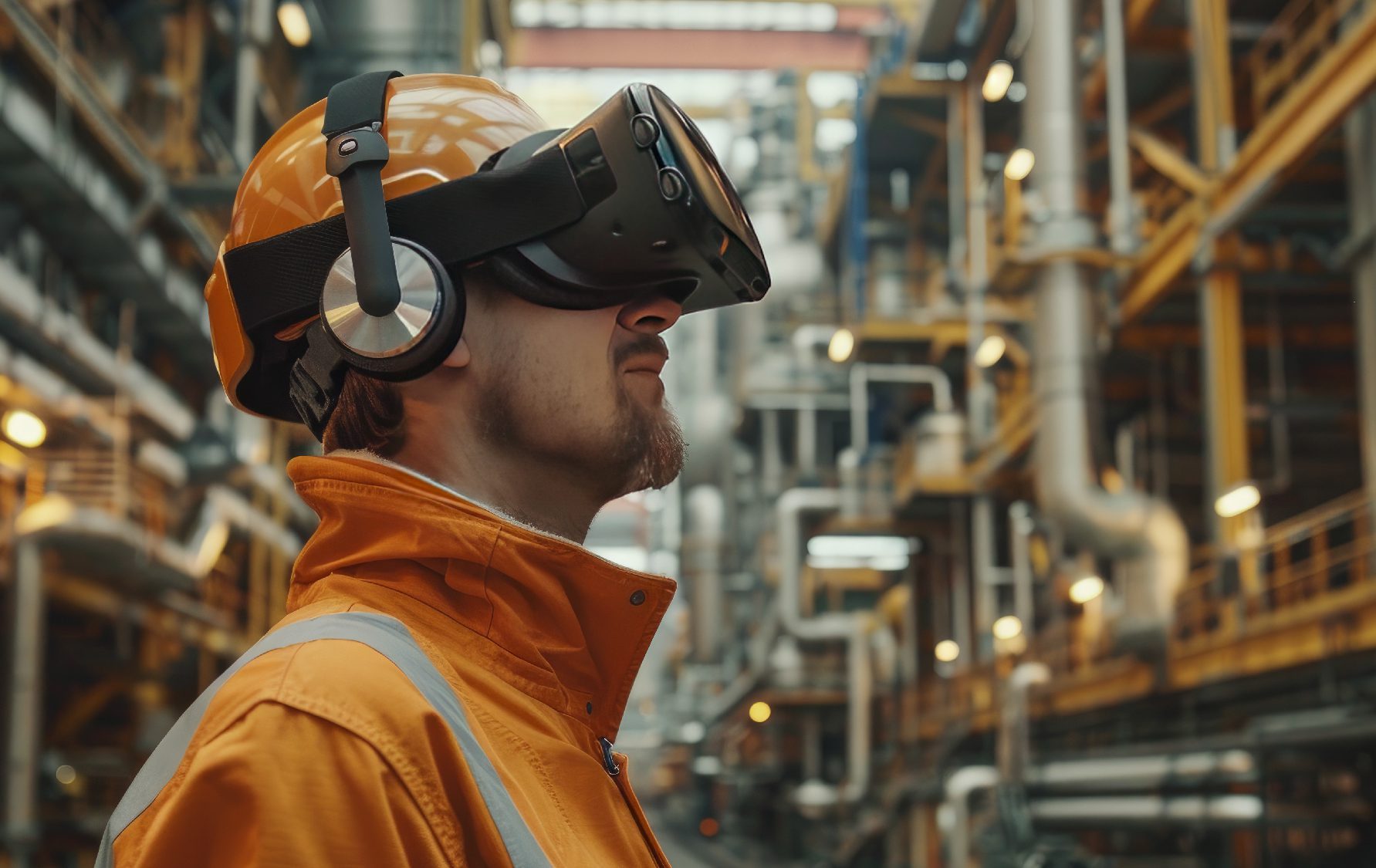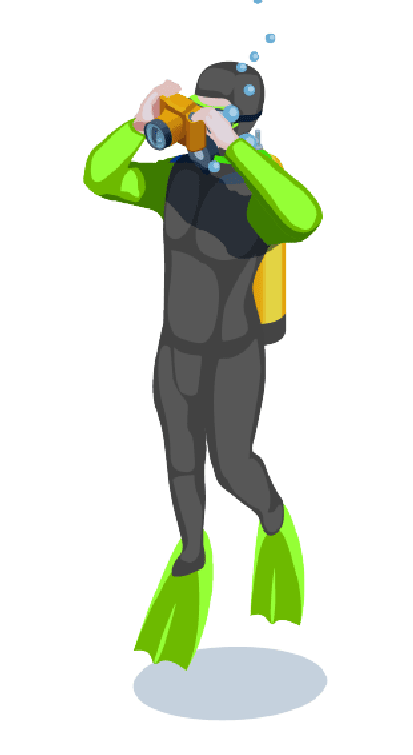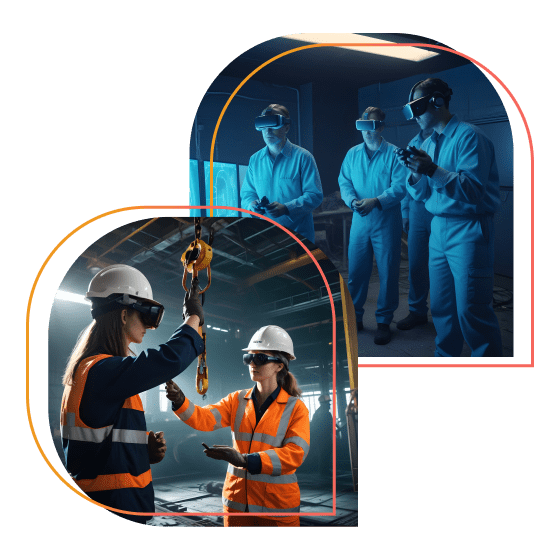Overview

VR technology for industrial training in the oil and gas sector: Improving safety, efficiency, and cost-effectiveness. The client faced training issues for subsea engineers due to expensive, time-consuming, and ineffective traditional methods.
- Travancore Analytics developed a Unity-based VR training app mimicking real scenarios for repairing broken pipelines.
- The app begins with a diving bell where the user gets briefed on the mission and repairs the pipeline in a habitat using the necessary tools and controls.
- Learners effectively retained procedures with repetition and independent study, shortening training periods and reducing costs.
Case
Extended Reality technologies such as Virtual Reality (VR), Augmented Reality (AR), and Mixed Reality (MR) are gathering steam in a broad range of industries and fields, from entertainment and education to healthcare and manufacturing. And among them, virtual reality training solutions are on the upswing in the field of education and training, as it offers a highly immersive and interactive learning experience by simulating real-world scenarios in a controlled environment, allowing learners to gain practical experience and develop skills without putting themselves in danger.
When compared to more traditional training approaches, VR training has the distinct advantage of more effectively capturing and holding the attention of its target audience, as they can interact with virtual objects and environments, making the training and learning experience more memorable, engaging, and enjoyable. VR training is also becoming more popular as a means to prepare workers for potentially life-threatening tasks like firefighting or operating heavy equipment to improve safety and minimize the chance of accidents or injuries in the workplace in compliance with safety standards such as OSHA (Occupational Safety and Health Administration).
Read more insights on Virtual Reality in OSHA Training
Our client, a prominent player in the oil and gas sector, encountered various issues in training their personnel, which comprised subsea engineers for repairing subsea gas pipeline leaks. Traditional training techniques used by the client were expensive, time-consuming, and ineffective at times. In light of the challenges in providing hands-on training, the client required a cost-effective and efficient training solution that would provide a realistic hands-on experience.
In light of this need, the client came to TA seeking a solution for an immersive virtual reality training solutions for subsea gas and pipeline repair.
Challenges
Delivering hands-on subsea pipeline training to their engineers was difficult owing to the pipeline's distant position in the deep sea, with possible safety hazards. Along with this, the client experienced additional issues, such as a lack of access to expensive and specialized training equipment and supplies. In addition, the conventional training techniques they used were costly, time-consuming, and ineffective at times. Fixing a subsea gas pipeline leak requires a high level of technical expertise and understanding of complicated processes, which engineers often struggle to grasp. As a consequence, the client wished to develop a training solution that would give genuine hands-on experience without the use of actual pipelines while also ensuring that their engineers had a thorough understanding of all processes and procedures. Moreover, the client sought a low-cost and efficient training solution that ensured the engineers obtained the essential skills and knowledge to execute the pipeline repairs safely and effectively.The challenges faced by the client include:
- Inefficient and time-consuming traditional training methods
- Lack of training materials
- Limited ability to practice in real-life scenarios
- Lack of retention among engineers due to the complexity of the processes

Solution
For the proposed immersive VR training solutions for subsea gas and pipeline repair solution, we developed the application in Unity with a comparable set of scenarios and tools used in real-life that would enable subsea engineers in training with a realistic and immersive learning experience to swiftly get the broken pipelines back up and running. The VR application simulated the undersea environment, enabling the engineers to practice performing repairs on virtual pipelines using the same tools and equipment they would use in a real-life situation, and also following similar procedures. Our in-house 3D designers created the entire environment for the solution that was similar to the real-life subsea pipeline setting from scratch.The application starts off with the subsea engineer being placed in a dive bell setup, and given a mission briefing video on the situation and the mission at hand. The engineer is then transported to the habitat, where the repair actually happens. In the habitat, the pipeline to be repaired is in temporary fix, and there are Gas Containment Barriers (GCB), Stand-off Sleeves, a tool box consisting of nuts and bolts, an electric torque wrench, a welding machine, and corrosion protection wrapping bands in the habitat. There is also a control panel with levers to operate the GCBs and Stand-off Sleeves, as well as a floating digital status indicator display that shows the status of the tasks.
The process begins with the installation of the GCBs. After placing the GCBs in position, nuts, bolts, and an electronic torque wrench from the toolbox are used to secure them. Then, Stand-off sleeve installation follows. After the stand-off sleeves are in place, they are welded using the welding equipment from the tool box. When the welding procedure is complete, corrosion protection wrapping bands are applied. The user may use the seals from the toolbox to apply the corrosion protection wrapping bands. After the application of the protective bands, the user is returned to the dive bell, where the mission is debriefed and the engineer is taken back.
The immersive VR training for subsea engineers offered the following features:
- Realistic simulations that provided the trainees with the sensation of being in a real-life subsea environment
- Voice and textual narration to aid the trainee in doing the activities correctly and efficiently
- Navigation arrows, and other elements to help the user while operating hoist levers, using items from the tool box, and so on
- Control panel with hoist levers to raise and lower different installation components
- Floating Status indicator display to guide trainees through tasks and alert them to mistakes.
Impact
The immersive VR training for subsea gas and pipeline repair solutions had a significant impact on the client’s training program. The subsea engineers were able to gain hands-on experience in a safe and controlled immersive environment, which resulted in reduced errors and increased efficiency during real-life repairs. The learners were able to effectively learn the procedures via repetition and independent study, resulting in a longer retention of the processes. The application not only improved the training experience, but also shortened the training period and reduced training time and costs.
The immersive VR training for subsea gas and pipeline repair solution had significant impacts on the client’s training program, such as:
- Increased efficiency and reduced errors during real-life repairs
- Hands-on experience in a safe and controlled immersive environment
- Longer retention of the processes
- Reduced training time and expenses
On the whole, VR has the potential to make industrial training safer, more cost-effective, and more effective in preparing employees for their jobs. As the technology continues to evolve and become more accessible, we can expect to see more widespread adoption of VR in various industrial training programs.
